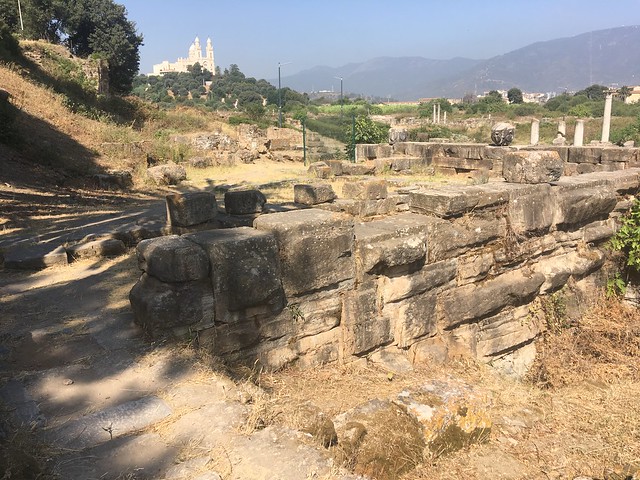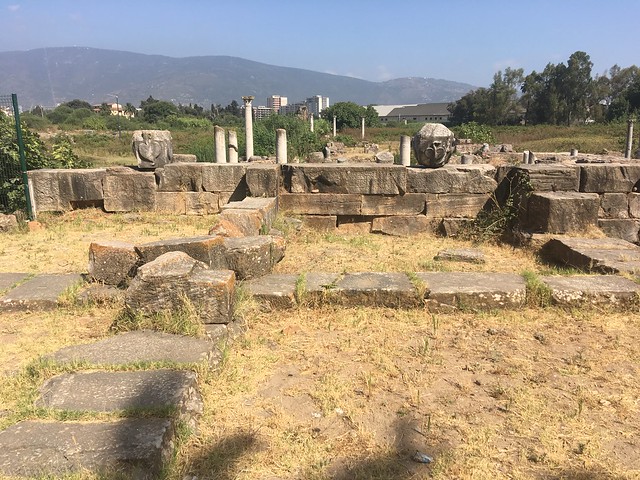Hippo Regius was an important coastal city in Numidia throughout antiquity. Under Roman rule, it was an invaluable port for exporting African grain to Rome. The harbor would therefore have had large imperial storehouses to preserve the grain until it could be shipped. Unfortunately, only a portion of the ancient city survives, and the ancient port is gone.
The picture below, taken from the modern Basilica of St. Augustine, looks east over the ancient site of Hippo Regius to the Mediterranean Sea beyond it. In antiquity, the coast was roughly 750 m (about half a mile) inland from where it is now.
A portion of the ancient sea-wall, built in the 1st century BCE, fortunately survives:
To the right of the entrance (above) are steps leading down to the early sea shore:
Carved springer-blocks from the Punic period depicting lotus leaves have recently been placed atop the remains of the sea-wall:
Find more pictures of Hippo Regius on Terrae Transmarinae’s Flickr page!







Leave a comment